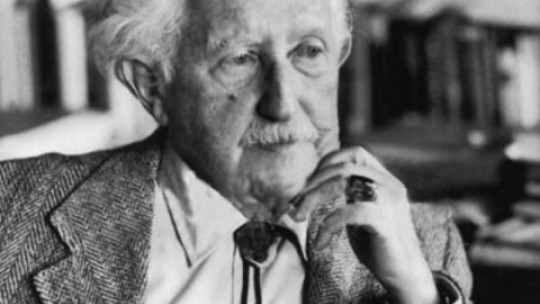The conception of children under 5 years of age as “polymorphous perverts” It is a very striking aspect of the work of Sigmund Freud, creator of psychoanalysis.
In this article we will describe what exactly this curious concept means, which is related to the potential to obtain sexual pleasure from any object during early life.
Freud’s concept of perversion
Freud stated that the main characteristic of sexuality during childhood is polymorphic perversion. To understand this concept, it is necessary to first define how perversion is defined in the work of the father of psychoanalysis.
For this author perversion is simply non-normative sexual behavior ; In the context in which Freud lived, heterosexual genital intercourse was conceived as normal, while practically any other type of sexual behavior was seen as a deviation from dominant morality. To a large extent this idea is still valid today.
However, in Freud’s work the view of “perversion” is not necessarily negative. Although rape or pedophilia, which cause suffering to the victim, are forms of perversion, according to Freud’s definition so are fetishism or homosexuality which considered abnormal but not pathological behavioral patterns.
What does “polymorphous perverse” mean?
According to Freud, during the first years of life, girls and boys obtain sexual gratification from very diverse sources. Drives are directed toward any object that can provide pleasure ; Furthermore, stimulation does not have to be limited to the genitals, but all parts of the body are susceptible to receiving gratification.
Thus, as we will explain in detail later, depending on the stage of psychosexual development, children would obtain sexual pleasure from sucking the mother’s nipple, retaining or expelling feces, and many other behaviors.
At the beginning of life, sexuality has not yet been focused on the objects that normative socialization demands, that is, fundamentally heterosexual intercourse. It is deduced from Freud’s work that this type of sexual education depends more on culture than biology so each society or group would reinforce these patterns to a different extent.
This causes young children to lack sexual and gender identity. Once the latency period has passed, that is, with the arrival of puberty, sexual gratification is progressively redirected to heterosexual intercourse with the ultimate goal of reproduction. There is a clear relationship between this fact and the development of morality or Superego.
Therefore, describe children as “polymorphous perverts” It implies that they are capable of feeling sexual pleasure in many different ways that deviate from the established social norm. This includes sexual orientation; Thus, we could say that according to Freud, in the early stages of life, all people are bisexual or even pansexual.
The stages of psychosexual development
Psychoanalytic theory is largely based on the five stages of psychosexual development described by Freud. According to this author, people go through these phases in the process towards puberty and adolescence, a time in which sexuality is definitively configured.
In each of these phases, sexual energy is focused on a different erogenous zone: the mouth, anus or genitals. If need gratification is insufficient or excessive during any of these stages, there is the risk of psychological “fixation” occurring ; This would imply the appearance of specific neuroses and perversions.
1. Oral phase
The first phase of sexual development corresponds approximately to the first year of life. During this period the baby obtains pleasure through the mouth, for example by introducing objects into it, which also allows him to explore his surroundings. The It dominates the psychic structure, so its functioning is based on the pleasure principle.
Fixation in the oral phase would cause the appearance of psychological traits such as immaturity, passivity and manipulability. On a sexual level, perversions related to the mouth would develop, such as focusing pleasure on kisses, fellatio or cunnilingus
2. Anal phase
The anal stage occurs between the second and fourth year of life. During this period, children learn to control personal hygiene, including the retention and expulsion of feces and urine. According to Freud, in the anal phase, sexual pleasure is obtained from the elimination of excrement through the intestinal and urinary tracts.
If a fixation occurs at this stage of development, obsessive-type traits and behaviors may appear (if the parents’ emphasis on cleanliness is excessive) or a tendency towards lack of organization, self-indulgence and rebellion (in the case opposite). Regarding sexuality, coprophilia and urophilia would be related to the anal phase
3. Phallic phase
Between three and six years of age, the genitals become the main erogenous zone. At this age, girls and boys become aware of their own bodies and those of others, and therefore of the differentiation of sex and gender. The famous Oedipus and Electra complexes (proposed by Carl Jung and rejected by Freud) would occur during this phase.
Compulsive masturbation is the perversion that can be most clearly related to the phallic phase. There would be a focus on the pleasure obtained through the penis or the clitoris, depending on the biological sex of the person.
4. Latency phase
Between the anal phase and puberty (that is, approximately between 6 and 10 years) sexual drives are silenced and energy is redirected towards social interaction, learning, leisure activities… During this period the character is consolidated. acquired during the previous psychosexual stages.
Fixations in the latency stage are considered to be less common than in other phases. When they happen tend to be related to intense sexual frustration and/or with an inability to focus pleasure on activities considered acceptable by the individual’s social context.
5. Genital phase
Freud considered that after puberty, people reach the definitive stage of psychosexual development: the genital phase, in which we will remain throughout adult life. Gratification focuses again on the genitals, although in this case normality includes obtaining pleasure through other people, and not alone.
Failures in the progress of this period can interfere with the acquisition of adaptive sexual relationship patterns. Thus, it is common for sexual dysfunctions such as arousal difficulties (mainly erection and lubrication, depending on sex) in sexual relations, and also that these are not satisfactory.









